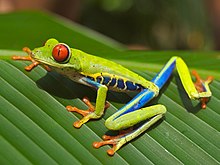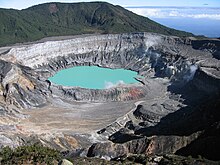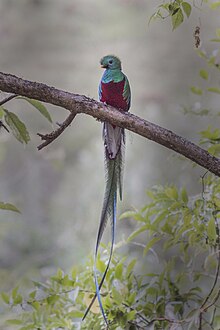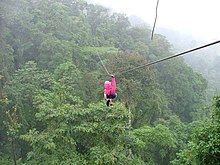
The economy of Costa Rica has been very stable for some years now, with continuing growth in the GDP and moderate inflation, though with a high unemployment rate: 11.49% in 2019. Costa Rica's economy emerged from recession in 1997 and has shown strong aggregate growth since then. The estimated GDP for 2023 is US$78 billion, up significantly from the US$52.6 billion in 2015 while the estimated 2023 per capita is US$26,422.

Ecotourism is a form of tourism marketed as "responsible" travel to natural areas, conserving the environment, and improving the well-being of the local people. The stated purpose may be to educate the traveler, to provide funds for ecological conservation, to directly benefit the economic development and political empowerment of local communities, or to foster respect for different cultures and human rights.

Sustainable tourism is a concept that covers the complete tourism experience, including concern for economic, social and environmental issues as well as attention to improving tourists' experiences and addressing the needs of host communities. Sustainable tourism should embrace concerns for environmental protection, social equity, and the quality of life, cultural diversity, and a dynamic, viable economy delivering jobs and prosperity for all. It has its roots in sustainable development and there can be some confusion as to what "sustainable tourism" means. There is now broad consensus that tourism should be sustainable. In fact, all forms of tourism have the potential to be sustainable if planned, developed and managed properly. Tourist development organizations are promoting sustainable tourism practices in order to mitigate negative effects caused by the growing impact of tourism, for example its environmental impacts.

Shark tourism is a form of eco-tourism that allows people to dive with sharks in their natural environment. This benefits local shark populations by educating tourists and through funds raised by the shark tourism industry. Communities that previously relied on shark finning to make their livelihoods are able to make a larger profit from diving tours while protecting the local environment. People can get close to the sharks by free- or scuba diving or by entering the water in a protective cage for more aggressive species. Many of these dives are done by private companies and are often baited to ensure shark sightings, a practice which is highly controversial and under review in many areas.

Tourism in Nicaragua has grown considerably recently, and it is now the second largest industry in the nation. Nicaraguan President Daniel Ortega has stated his intention to use tourism to combat poverty throughout the country.

Ecotourism is the concept of responsible trips and travel to areas that might be protected and especially fragile. The intent is to create as little detrimental impact on the environment as possible. South Africa has used ecotourism to sustain and improve its immense biodiversity, as well as invigorate its economy. Tourism is the fourth largest generator of foreign exchange in South Africa, and ecotourism is the idea of encouraging visitors while promoting and supporting a country's biodiversity. South Africa contains a lot of biodiversity, and so ecotourism is a way for the country to benefit from wildlife in a non-consumptive and legal manner as opposed to illegal activities like poaching and trafficking for the international wildlife trade.
Rural tourism is a tourism that focuses on actively participating in a rural lifestyle. It can be a variant of ecotourism. Many villages can facilitate tourism because many villagers are hospitable and eager to welcome or host visitors. Agriculture has become more mechanized and requires less manual labor. This trend is causing economic pressure on some villages, which in turn causes young people to move to urban areas. There is however, a segment of the urban population that is interested in visiting the rural areas and understanding the lifestyle.
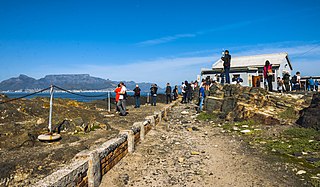
South Africa is a tourist destination with the tourist industry accounting for 2.34% of GDP in 2019 followed by a sharp drop in 2020 to 0.81% of GDP due to lack of travel caused by the COVID-19 pandemic. The official marketing agency for the country South African Tourism is responsible for marketing South Africa to the world. According to the World Travel & Tourism Council, the tourism industry directly contributed ZAR 102 billion to South African GDP in 2012, and supports 10.3% of jobs in the country. The official national marketing agency of the South African government, with the goal of promoting tourism in South Africa both locally and globally is known as South African Tourism.
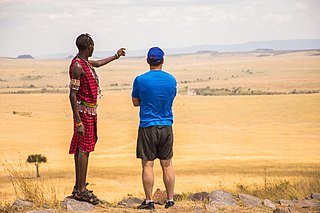
Tourism in Kenya is Kenya's third largest source of foreign exchange revenue, following diaspora remittances and agriculture. The Kenya Tourism Board is responsible for maintaining information about tourism in Kenya.

Since the 2000s, Tourism in Peru makes up the nation's third largest industry, behind fishing and mining. Tourism is directed towards archaeological monuments, ecotourism in the Peruvian Amazon, cultural tourism in colonial cities, gastronomic tourism, adventure tourism, and beach tourism. According to a Peruvian government study, the satisfaction rate for tourists after visiting Peru is 94%. Tourism is the most rapidly growing industry in Peru, growing annually at a rate of 25% over the past five years. Tourism is growing in Peru faster than any other country in South America. Iperú is the Peruvian national tourist office.

Tourism in Costa Rica has been one of the fastest growing economic sectors of the country and by 1995 became the largest foreign exchange earner. Since 1999, tourism has earned more foreign exchange than bananas, pineapples and coffee exports combined. The tourism boom began in 1987, with the number of visitors up from 329,000 in 1988, through 1.03 million in 1999, over 2 million in 2008, to a historical record of 2.66 million foreign visitors in 2015. In 2012, tourism contributed with 12.5% of the country's GDP and it was responsible for 11.7% of direct and indirect employment. In 2009, tourism attracted 17% of foreign direct investment inflows, and 13% in average between 2000 and 2009. In 2010, the tourism industry was responsible for 21.2% of foreign exchange generated by all exports. According to a 2007 report by ECLAC, tourism contributed to a reduction in poverty of 3% in the country.

Deforestation is a major threat to biodiversity and ecosystems in Costa Rica. The country has a rich biodiversity with some 12,000 species of plants, 1,239 species of butterflies, 838 species of birds, 440 species of reptiles and amphibians, and 232 species of mammals, which have been under threat from the effects of deforestation. Agricultural development, cattle ranching, and logging have caused major deforestation as more land is cleared for these activities. Despite government efforts to mitigate deforestation, it continues to cause harm to the environment of Costa Rica by impacting flooding, soil erosion, desertification, and loss of biodiversity.
Responsible tourism is a relatively modern concept in the Kingdom of Thailand that took root in the late-1990s. It is underpinned by the belief that tourism should develop in a manner that minimizes negative impacts on local communities, and wherever possible ensure that a positive symbiosis exists between hosts and visitors. Responsible travel promotes a respect for indigenous culture, the minimization of the negative environmental impacts of tourism, active participation in volunteering to assist local communities, and the structuring of businesses to benefit the final service provider rather than an international agent.

Cinque Terre National Park is a protected area inducted as an Italian national park in 1999. Located in the province of La Spezia, Liguria, northern Italy, it is the smallest national park in Italy at 4,300 acres, but also the densest with 5,000 permanent inhabitants among the five towns. In addition to the territory of the towns of Cinque Terre, the Cinque Terre National Park encompasses parts of the communes of Levanto and La Spezia. Cinque Terre was included as a UNESCO World Heritage Site in 1999.

Ecotourism in Jordan has grown tremendously due to environmental pressures and the demand for jobs outside of the cities, especially since the establishment of the Dana Biosphere in 1993, the first biosphere reserve.

Valdivia Temperate Rainforest is an area between 36 and 47° S. consisting of a majority of the country Chile and a small part of Argentina totaling about 12.7 million hectares. The Valdivian forest is one of the few forested regions in the world with climate conditions to be considered a temperate climate. Its ecological systems provide habitat for a clustering of some of the highest biodiversity in the world. Many of the species are endemic to Valdivia and are descendants of Gondwana Species. For example, Araucaria araucana or "Monkey Puzzle Tree", and Fitzroya cupressoides "Alerce". Due to the region's unique landscape and biodiversity millions of visitors come to the area annually. National Parks in the region provide opportunities for many tourism operations. In an effort to help preserve and expand conserved areas Ecotourism or Sustainable Tourism plays a vital role. The economic benefits affect not only the park areas but also the local communities. Ecotourism accounts for 4.6% of Chile's GNP.

The economy in the Caribbean region is highly dependent on its tourism industry; in 2013, this industry constituted 14% of their total GDP. This region is largely appealing for the sun, sand, and sea scene. Despite the fact that tourism is very reliant on the natural environment of the region, it has negative environmental impacts. These impacts include marine pollution and degradation, as well as a high demand for water and energy resources. In particular, the degradation of coral reefs has a large impact on the environment of the Caribbean. Environmental damage affects the tourism industry; therefore, the tourism sector, along with the public sector, makes efforts to protect the environment for economic and ethical reasons. Although these efforts are not always effective, there are continuous efforts for improvement.

Although the conservation movement developed in Europe in the 18th century, Costa Rica as a country has been heralded its champion in the current times. Costa Rica hosts an astonishing number of species, given its size, having more animal and plant species than the US and Canada combined while being only 250 miles long and 150 miles wide. A widely accepted theory for the origin of this unusual density of species is the free mixing of species from both North and South America occurring on this "inter-oceanic" and "inter-continental" landscape. Preserving the natural environment of this fragile landscape, therefore, has drawn the attention of many international scholars.
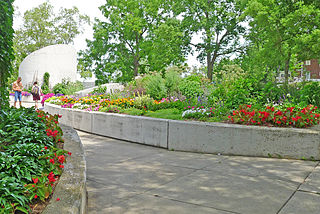
Urban ecotourism is a relatively new form of ecotourism that takes place in urban settings. The concept first appeared in 1996 when the Blackstone Corporation defined it as “[...] travel and exploration within and around an urban area that offers visitors enjoyment and appreciation of the city's natural areas and cultural resources, [...] promotes the city's long-term ecological health [...] promotes sustainable local economic and community development and vitality; [...] is accessible and equitable to all”. Urban ecotourism shares the same goals for sustainability and community development as traditional ecotourism, but applies them to large cities, industrial wastelands, and post-productivist agriculture sites, as opposed to more nature-based venues for traditional ecotourism. Destinations in these locations may take the form of linear parks, farm-to-table restaurants, rewilding parks, biking and hiking trails, sustainable hotels, and rooftop gardens.

